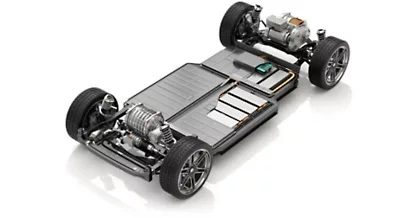Passenger electric vehicle (EV) sales are at more than 10 million units globally, up from 6.6 million in 2021, according to "The Zero-Emissions Vehicle Factbook." In the first half of 2022, more than 13 percent of new car sales globally were electric, rising from 8.7 percent for all of 2021. As our primary mode of transportation steadily shifts to greener and cleaner sources, requirements for innovation are heightened. Environmental commitments by automakers and governments are at the wheel in this modern EV era, driving the development of new vehicle architectures that meet expectations for both volume and space reductions, combined with lower product costs and greater product reliability.
EV developers are finding a competitive edge through efficiency gains not only in new battery pack technology and electronic components, but also through new developments in electric machines.
For decades, electrical machines have been an essential part of our daily lives. They enable us to engage in a variety of tasks, from cooking and computing to driving. But electric machines provide a number of advantages — precision, efficiency, and versatility — that come with a set of engineering challenges. In an EV, these challenges center around the electric traction motor, where there are so many variables to consider — such as drive cycles, maximum speed, noise, vibration, and more. These can have far-reaching consequences for overall vehicle performance.
Considering the source of noise and vibration in an electric powertrain, for instance, is a real multiphysics issue. An electric machine contains an inverter with high frequencies and a motor with low frequencies caused by electrical signals, which causes mechanical deflection and is the source for this noise and vibration. Engineering simulation offers the ability to prevent unforeseeable problems, like noise, vibration, and harshness (NVH), to predict realistic sound before any hardware is built.
As competition heats up in the electrification market, the increasingly complex matrix of engineering goals must be addressed within shorter product development cycles. Simulation delivers tremendous benefits that offer accurate information to support evaluations in a timely manner and keep track of every design decision. By integrating multiphysics analysis into the development of electric machines, designers can get a strong grasp on the electromagnetic, thermal, and mechanical aspects of motor design.
Getting as close to “right-the-first time” designs as possible requires the evaluation of many different concepts, topologies, and electronic interactions across disciplines. An agile development process and systematic design optimization strategy is key to identifying and implementing the best possible electric motor technology that will meet the efficiency, size, and power density requirements of an application. Using Ansys simulation software, for example, you can gain confidence with accurate high-fidelity models and establish a reliable basis for decision-making when balancing an array of vehicle requirements. You can assess conflicts with performance criteria as soon as they’re uncovered, with the possibility to look at them both independently and in concert over the full operating range using multiphysics simulation workflows by Ansys.
Learn more about Ansys electric machine solutions here:
ansys.com/blog/electric-vehicle-development-with-simulation






